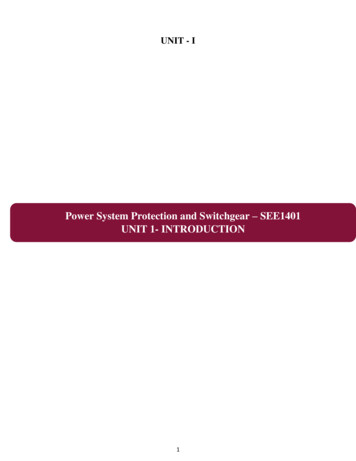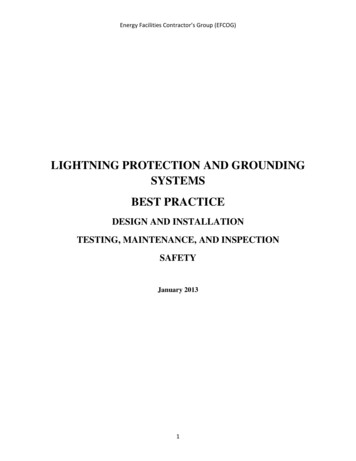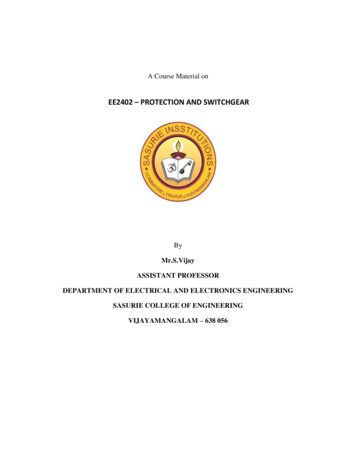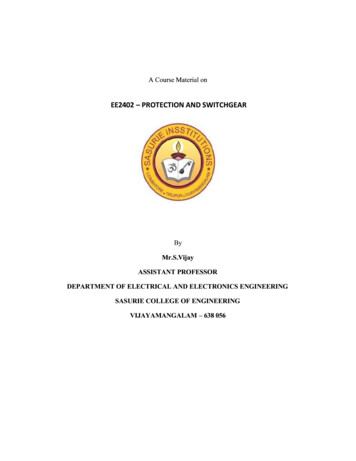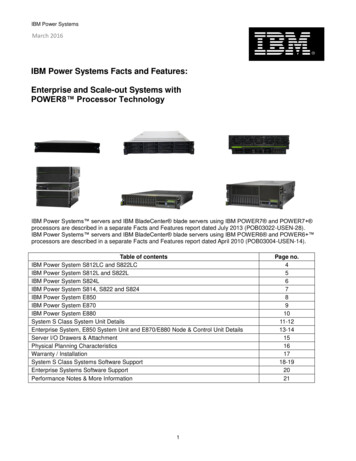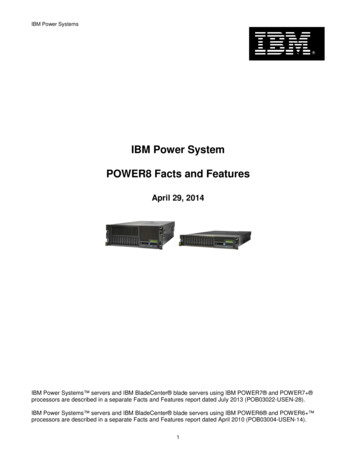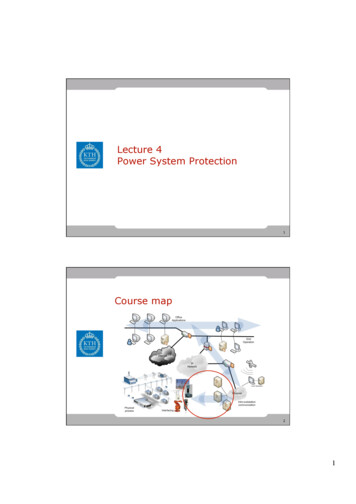
Transcription
Lecture 4Power System Protection1Course map21
Outline of the Lecture Control vs Protection Protection Principles Protection requirements Protection Schemes3Control vs. Protection42
Why do we need to control? Control actions needed Automatic– Equipment Protection Disonnection at fault– Voltage control Move a tapchanger in a transformer Human intervention– Frequency control Increase output in hydro plant– Voltage control Connect capacitor bank5What can we control? BreakersValvesTap changersSwitchesDrives All done using Relays63
Basic Relay concepts ElectromechanicalStaticDigital“Numerical”Pre 1970s1970s1980sPresent - 7The numerical relay Current state ofthe practice– A/D & D/Aconverters– Dedicated CPUfor Digital SignalProcessing– Programmable– Real-timeoperating system84
Application examples9Numerical relays - issues Software Version Control– Same problem as for all software systems Relay Data Management– Large amounts of parameters– Vendors specific vs. standardisation Testing & Comissioning– Complex equipment needed for testing– Too complex for field repairs105
Outline of the Lecture Control vs Protection Protection Principles Protection requirements Protection Schemes11Purpose of the ProtectionSystem ProtectEquipment Protect People &Property Separate Faultysection frompower system Restore normaloperation126
Most basic type of protection? The FusetI13Relay Protection system147
Different Types of Protection15Assets in a Power Grid(value)168
Fault types17Fault Statistics189
Line fault statistics19Outline of the Lecture Control vs Protection Protection Principles Protection requirements Protection Schemes2010
Protection requirements The protection system must be– Reliable– Stable– Sensitive– Selective– Timely21Reliability The protection system must provide itsfunction when required to avoid damage toequipment, people or property Reliability problems stem from– Incorrect design– Incorrect installation/testing– Deterioration The study of the reliability of a protectionsystem is critical2211
Stability The protection system shall not react tonon-fault situations The protection system must not react tofaults in neighboring zones or high loadcurrents.23Sensitivity Sensitivity refers to the minimal changes inmeasured parameter that the system canreact to. For electromagnetic relays, this was a maindesign characteristic. Presently, the sensitivity is determined bythe CT/VT and design of the system2412
Selectivity Only the effected parts of the powersystem shall be disconnected. Is achieved by two main methods– Time-grading/Current Grading Relays are set to operate depending onthe time and current characteristics– Unit systems Current is measured at several pointsand compared.25Timeliness - Speed Faults must be isolated as fast as possible. Speed is necessary for two main reasons– Maintain stability of the overall powersystem– Reduction of damage to equipment &property2613
Stability vs Reliability27Fault Clearance Chain2814
FCC with Local backup29Breaker Failure Protection3015
Outline of the Lecture Control vs Protection Protection Principles Protection requirements Protection Schemes31Different Types of Protection3216
Fundamentals of Protection Protection System– A complete arrangement of equipment thatfulfills the protection requirements Protection Equipment– A collection of devices excluding CT, CB etc Protection Scheme– A collection of protection equipmentproviding a defined function.33Zones of Protection By dividing the powersystem into protectionzones the extent ofdisconnections can belimited3417
Overlapping protection zones35Backup Protection Zones3618
Over-Current Protection37Achieving Selectivity3819
Discrimination by Time39Discrimination by Time & Current4020
Directional Relays41Time grading Example from Strauss 4.4.2.4221
Example - Protection SchemeMathias Ekstedt43Example – relay settingsMathias Ekstedt4422
Distance Protection45Principle of Distance Protection4623
Power Line Characteristics47Benefits of Distance Protection4824
Differential Protection49Unit – Differential ProtectionMathias Ekstedt5025
Diffferent Protection schemes51Protection Summary The Power System must be protected– To avoid damage to equipment, people &property Protection systems are created using CT/VTs, relaysand circuit breakers Key characteristics are:– Selectivity– Speed– Reliability– Stability– Sensitivity Numerical Relays are essentially small computers The Intelligent Electronic Device5226
Relay Protection system . 8! 15! Different Types of Protection 16! Assets in a Power Grid (value) 9! 17! Fault types 18! Fault Statistics . 10! 19! Line fault statistics 20! Outline of the Lecture Control vs Protection Protection



